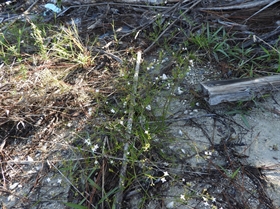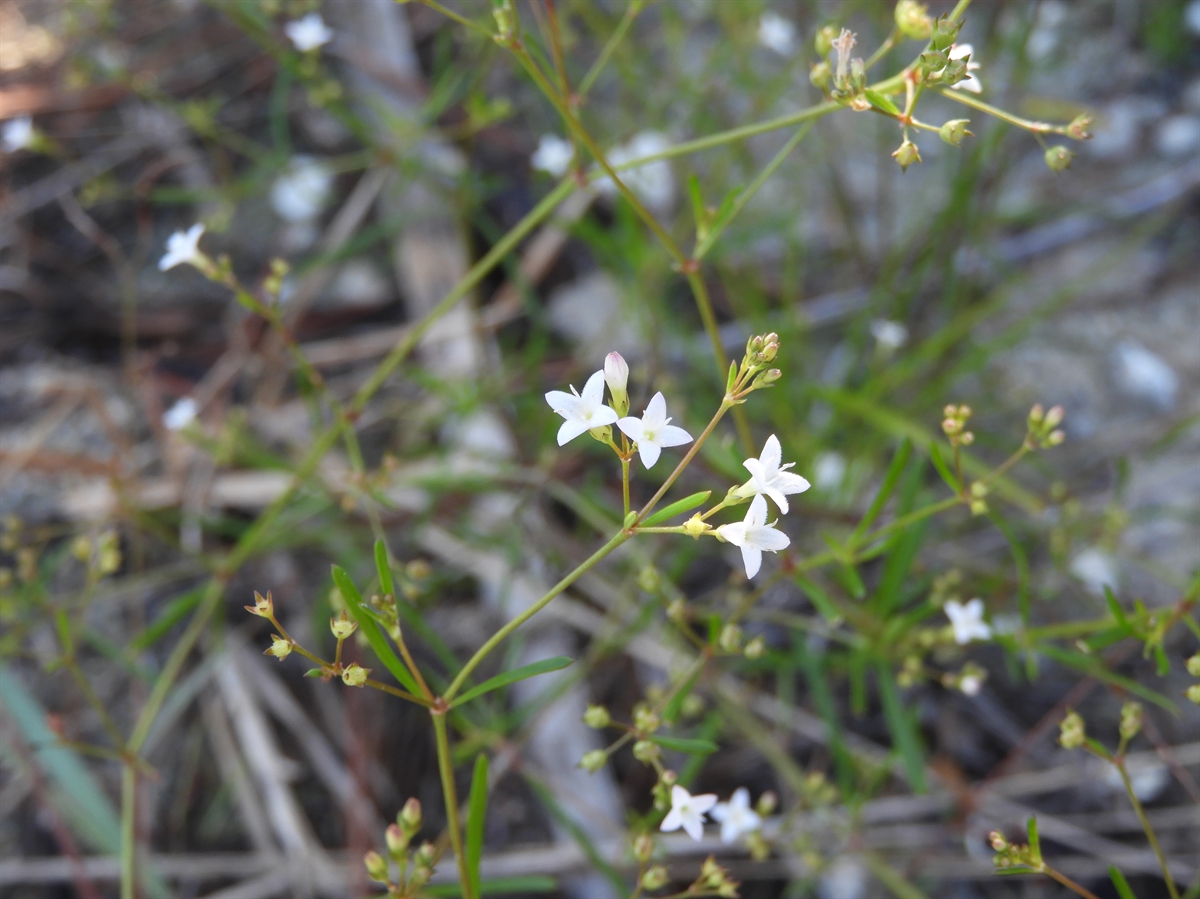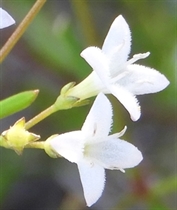Habit: Stenaria nigricans grows as a highly branched perennial up to 50 cm in height. The stems are glabrous. The sessile leaves are arranged oppositely with fringed stipules between the petioles. The leaves are filiform to lanceolate, up to 4 cm long (typically shorter), with an acute leaf apex and a slightly revolute and scabrous margin.
The complete, perfect, actinomorphic flowers occur in few flowered cymes, with leaves, that are terminal or axillary. The calyx has 4 fused, green sepals. The corolla has 4 fused white/pink petals that form a short tube with a pubescent throat. There are 4 stamens that are fused to the corolla. The ovary is inferior with 2 locules with many ovules. There are flowers with long styles and short styles (heterostylous). The fruit is a capsule at maturity.
Habitat: Stenaria nigricans grows in open areas in Pine Woodlands.
Distribution: Stenaria nigricans occurs in the northern island (Grand Bahama and Abaco) groupings in the Lucayan Archipelago, Mexico and the United States.
Medicinal/Cultural/Economic usage: Stenaria nigricans is not known to be used medicinally in the Lucayan Archipelago.


